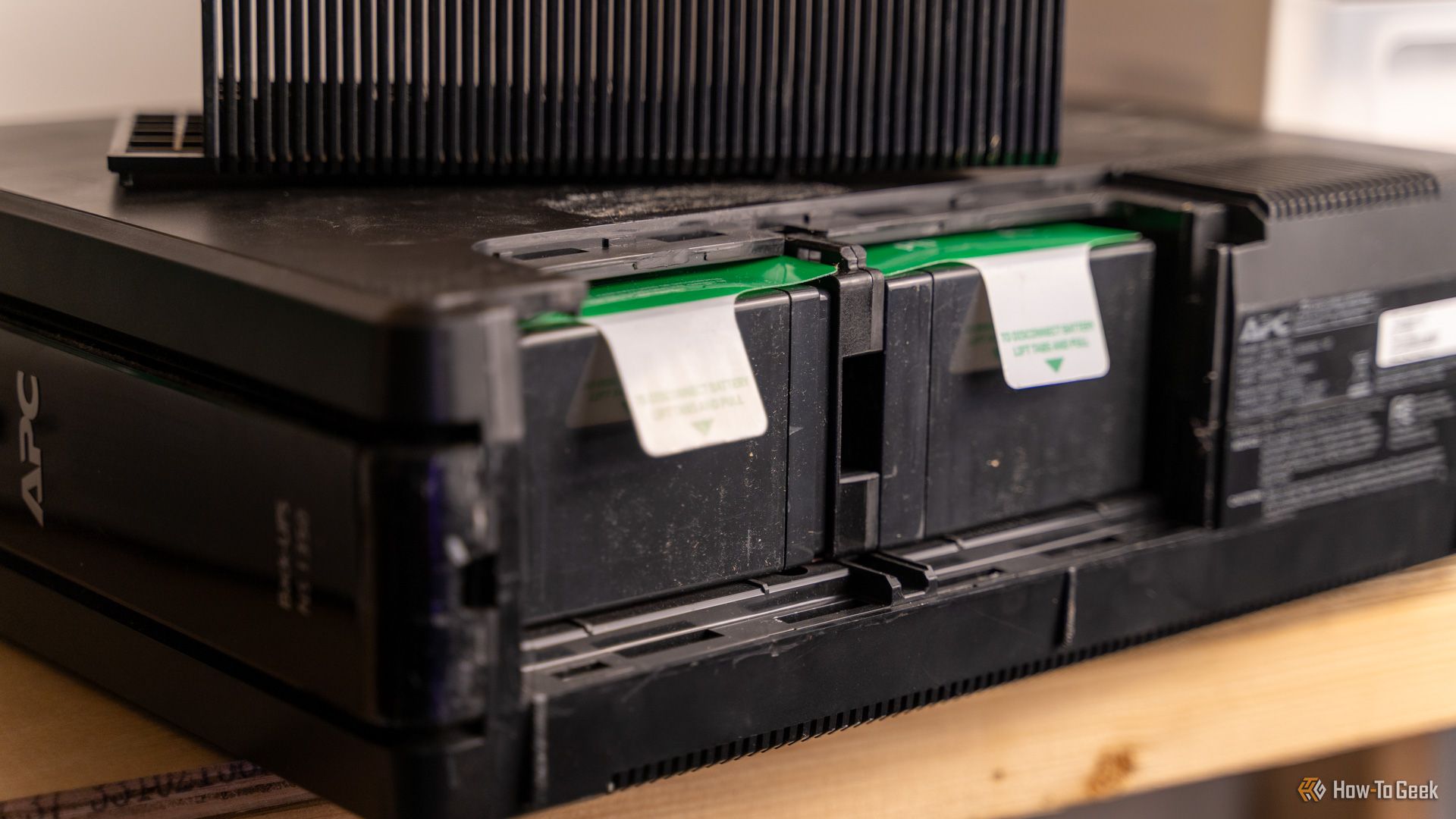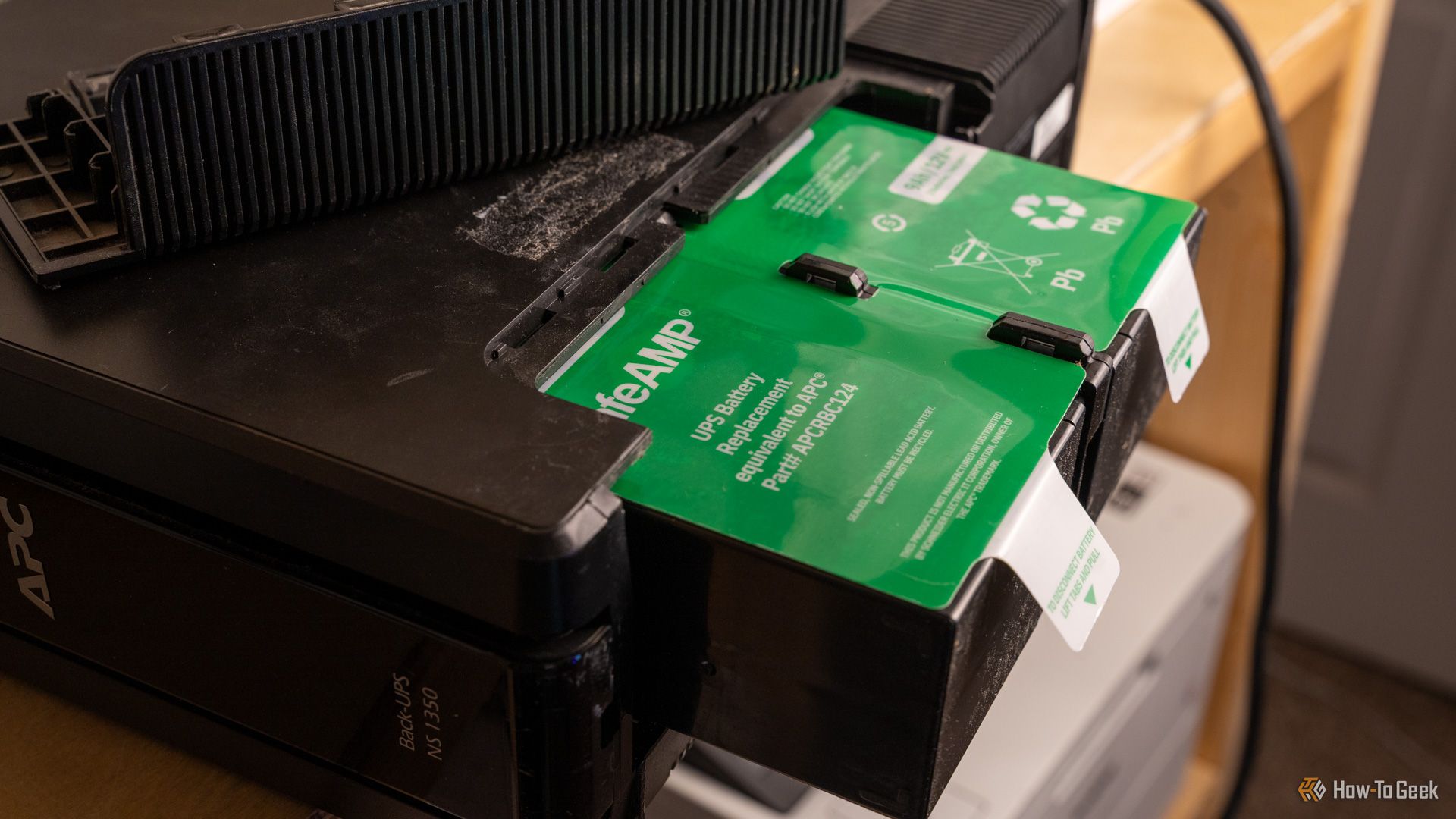Summary
- My UPS stopped holding a charge years ago, turning into just a surge protector instead of a proper battery backup.
- I found out that my UPS actually supported user-swappable batteries, so I looked into what it would cost to replace the battery in it.
- After doing research, I found that I was able to actually upgrade to a higher capacity battery at a lower cost.
If you have a UPS lying around that has a bad battery, it’s sometimes easier than you expect to change it. I wasn’t expecting my UPS to be so easy to swap out the battery.
I didn’t just replace the old battery, however. I actually increased the capacity by nearly 30% (while saving money in the process).
My UPS Stopped Holding Its Charge, and I Needed to Fix That
I hate buying uninterruptible power supplies (UPS) because they’re just so expensive. I’ve had a 1350VA one for probably close to a decade at this point, and it finally kicked the bucket a few years ago. Yes, it hasn’t held a charge in a few years.
I used it for a while just as a surge protector, and eventually migrated away from using it entirely because I got tired of having to manually turn it back on if the power went off.
A few months ago, I moved my entire homelab to be in my office and redo (and rewire) everything. This included running two dedicated 20A power circuits to the office, where I now had a renewed drive to have a UPS deployed again.
Since I definitely wasn’t going to spend close to (or even over) $200 to replace it, I decided to see if there was any other option out there—thankfully, many UPS systems support swapping the battery, which is often far cheaper than buying an entire new unit.
Many UPS Systems Offer Replaceable Batteries
I was actually surprised to find out that my UPS supported user-swappable batteries. I guess in the unrepairable age that we live in, where everything is sealed and nothing is easy to replace, I expected the UPS to be the same.
Instead, it’s the exact opposite. There are no screws, no tabs, no stickers, no…anything to get through in order to swap the battery. My UPS simply has a little door that slides off on the bottom and then the battery slides out just the same.
This was a very welcomed discovery, as it meant that I could easily swap out that old battery for a new one. So, I started hunting for the replacement battery I’d buy—but this is where I discovered an even bigger surprise.
I Found a Larger Capacity Battery That Fit My Existing UPS
I already mentioned that my UPS was a 1350VA unit. While I wish it were 1500VA, I simply didn’t buy the larger capacity when I first got the UPS.
Did you know that you can change your UPS capacity later on by replacing the battery? Because I didn’t. However, when I discovered that they offered the same physical size battery with a higher capacity, that’s exactly what I did.
After a bit of research, I found out that I could replace the 7Ah battery that came installed in the UPS from the factory with a 9Ah battery—for little to no extra cost. For my specific UPS, it was actually cheaper for me to get the 9Ah battery.
The 7Ah battery one would have cost me $73, while the 9Ah battery cost $56. I’m not sure why the higher capacity was less money, but it still had great reviews on Amazon and slid right in when it arrived.
Doing this upgrade (which is only $10 more if you buy the 9Ah battery directly from APC) will give my system an additional 2Ah of capacity, which should deliver nearly 30% more runtime than before.
Since it’s a brand-new battery, I’ll have even more runtime than I was used to when the battery was failing, too. All around, this will be a huge upgrade for my homelab.
Now that my UPS is repaired, and I’m about to deploy it, I plan to pick up a USB cable for it. With a USB cable and UPS, you can actually use a Docker container to programmatically shut down computers over the network when the UPS goes on battery power.
Some NAS units also support this functionality, and it’s a great way to ensure data security and stop file transfers before a server or computer shuts down forcefully.










Leave a Comment
Your email address will not be published. Required fields are marked *